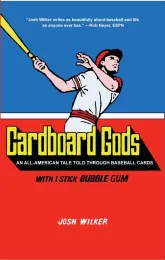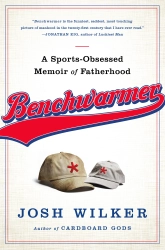Tour Guide
Batter and Sky
You know the old saying by comedian Joe E. Lewis that rooting for the Yankees is like rooting for U.S. Steel? For all of us who have suffered at the hands of the Yankees, it’s an irresistibly savory putdown of Yankees fandom, to be sure—though those most likely to use it, i.e., the staunchest Yankee-haters, namely Red Sox fans like me, also follow a team that is now a gigantic worldwide corporation with a payroll that towers over most other franchises—but it doesn’t quite get to the qualitative difference between rooting for the Yankees and rooting for any other team. Rooting for most teams is like hoping for one sweet day in the sun. Rooting for the Yankees is like knowing there is an eternity of blue sky.
I’m not suggesting that rooting for the Yankees doesn’t have many other levels and subtleties, or that it doesn’t involve pain and humor and longing and familial bonding and worry and nostalgia and all the other countless shadings of joy and woe that draw us into sports. But compare, say, a San Diego Padres Padres fan to a Yankees fan. Imagine you’re a Padres fan from way back. In your youth you held in your hands the baseball cards of the likes of Alan Foster and Rich Folkers. You tried to believe these innings-moppers, itinerant, nondescript, heretofore untouched by any measure of major league glory, shrouded in homely, vaguely humiliating fast-food yellow and brown, would somehow lead your team to its first championship. It’s 36 years later, and you’re still waiting. Meanwhile, your hypothetical Yankees fan contemporary spent his 1970s youth learning of Berra and DiMaggio and Ruth and a string of championships going back as far as a young mind could conceive, and living through back-to-back World Series titles in 1977 and 1978, then racking up several more championships a few years later, including one in which his team set a franchise record with a staggering 114 wins before stomping the National League entry in the World Series, the San Diego Padres.
These two hypothetical fans can’t help but differ. First of all, the hypothetical Padres fan has a much smaller chance of existing. I’ve been to a game in San Diego. The Padres were in first place and it was a Friday night and there was even the mild novelty of it being an interleague game featuring Ichiro Suzuki. Despite all that, the hypothetical fans still strongly outnumbered the actual paying customers, and throughout most of the game the sound of the scattered, atomized gathering was anemic. Even when the division-leaders won in highly dramatic fashion with two runs in the bottom of the ninth, the reaction, at least in my memory, less resembled a thunderous stadium yawp than the thin, ragged soufflé of boozy yells, whistles, and clapping you might hear at last call upon the final crashing cymbal of a bar band’s stomp through “Freebird.”
And then there’s the sound that Yankees fans make when massed together in their home stadium, specifically when a crucial game that had been in doubt teeters to the brink of turning in the Yankees favor. I’ve been in the middle of this sound, quietly praying for the opposing team, and it’s like being dissolved by stomach acid inside the belly of whale. It’s a roar unlike that made by any other fans. Other roars are as deafening and hungry, but none have that serrated edge of absolute certainty. We win, it says, devouring. We will always win. There will always be a hero. There will always be blue sky.
***
When a young man named Doug McWilliams started taking photos for Topps baseball cards in the early 1970s, he was looking beyond the standard existing parameters of baseball card photography. He was looking to the blue sky. His work, displayed so far in our tour in the gleaming, statuesque photos of Alan Foster and Rich Folkers, followed the lead of a boyhood idol. As McWilliams told Carl Steward in 2010, “When I was a kid, I got a subscription to Sport magazine in 1948. I fell in love with Ozzie Sweet, a photographer who shot photographs of athletes and celebrities with brilliant colored backgrounds and they were more like portraits. I really liked what he did and I tried to emulate him throughout my career.”
Ozzie Sweet’s photographs have the gravity and chiseled solidity of great sculpture. According to a 2001 article by John Breneman, Sweet had himself idolized the creator of the Mount Rushmore monument and had begun his own artistic life as a sculptor before turning to photography. His painstakingly composed shots, which earned him praise from Newsweek photo editor Thomas P. Orr as “the Hank Aaron and Babe Ruth of the magazine cover business,” create a sense of heightened, often heroic reality filtering through a moment that in lesser hands would feel stiff, forced, but that in Sweet’s care is natural, graceful, human. Sweet got his start with posed photos of soldiers during World War II and went on to create portraits of titanic public figures such as Albert Einstein and John Wayne, but his talent found perhaps its greatest and most suitable playground when he turned his lens to the world of sports. In his work for Sport magazine in the 1950s and 1960s he defined a key aspect of that surging post-war era, his sunny, iconic images of star athletes, such as the one at the top of this page, as bright and striking as the opening chord of “A Hard Day’s Night,” as brimming with youthful assurance and hope as John F. Kennedy’s claim that “the torch has been passed to a new generation.”
***
The certainty of Yankees fans is a streamlined version of the certainty of the most powerful nation in the history of the world. This certainty peaked in both cases during the post-war boom years of the 1950s and early 1960s, those days of heroes and blue sky. The Yankees had been strong before, as had America, but a kind of undefeated and undefeatable mindset set in during the 1950s, as the Yankees ripped off a string of championship wins unprecedented even in their already luminous history. The key figure, in that championship run if not, symbolically speaking, in all of America, was the young man Ozzie Sweet’s mythologizing camera loved most of all, Mickey Mantle. With Mickey Mantle, we not only win. We will always win.
American certainty began diminishing at some point. Compulsively, repeatedly, attempts are made to pinpoint a moment when this certainty was first shaken. It happened in Dallas in 1963. It happened in Memphis in 1968. It happened in Altamont in 1969. It happened in 1980 on the Upper West Side, outside the Dakota. It happened in 2001, on a morning when the sky was, well, you know what color the sky was that morning. But maybe it didn’t really happen anywhere, or happened everywhere, a little or sometimes a lot at a time, and kept happening, and keeps happening, and will go on happening. Maybe it was all an illusion anyway, or if not an illusion then a fleeting reality, here for a while then gone. A hero arrives, the embodiment of America, all flawless strength and innocence, but he can’t stay that long. By 1976, the year the cards featuring Doug McWilliams’ portraits of members of the San Diego Padres appear, the hero has been gone from the field for a while. In McWilliams’ images, the blue sky remains, but it is juxtaposed by the unremarkable journeymen in the foreground. The result is a vivid glimpse of the core national irony of we the people, we of the blue sky, we the defeated.







You must be logged in to post a comment.